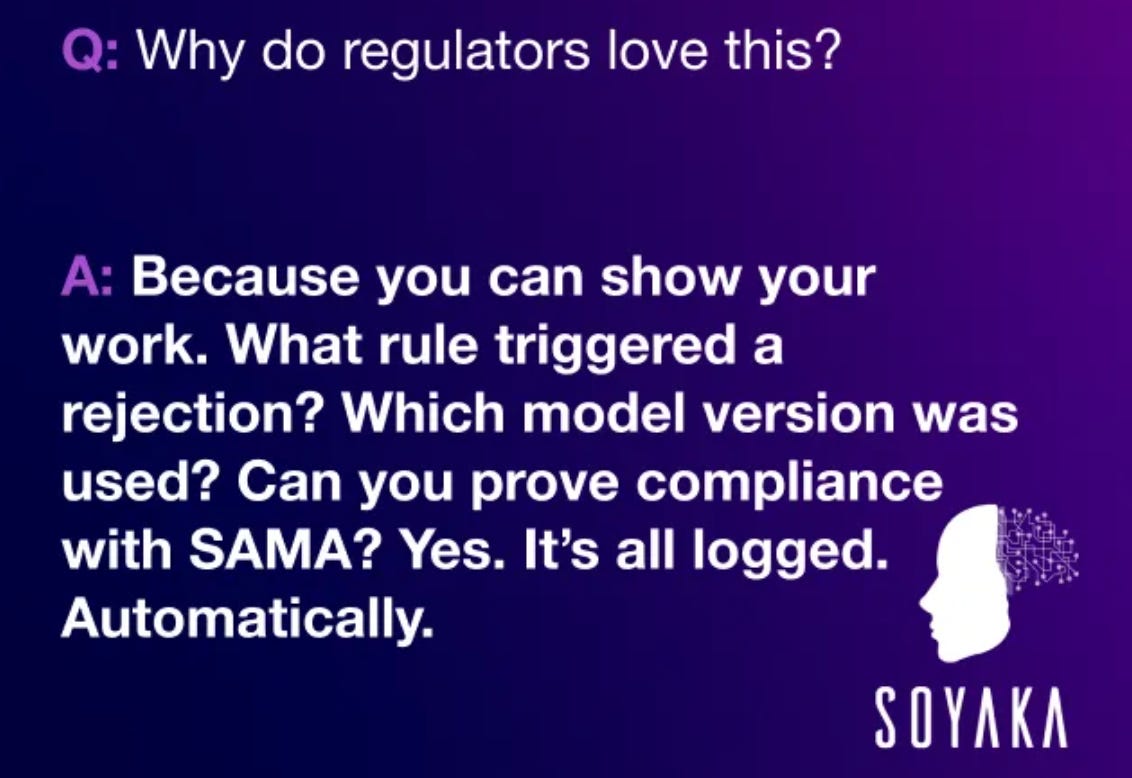🔩 6 - The Role of Decision Tables in Lending AI
Why we put human rules back at the center of the credit system.
✍️ Written from Riyadh — for founders, product teams, and AI builders in regulated markets.
🎧 Listen to this Article
Modern AI platforms love to talk about models. Predictive power. Neural nets. Black-box brilliance. But in real-world lending — especially in regulated markets — the last mile is rarely a model.
It’s a decision.
And more often than not, that decision is governed by rules:
✔️ Loan eligibility thresholds
✔️ Risk grade cutoffs
✔️ Product-level pricing criteria
✔️ Regulatory policy compliance
At SoyakaAI, we built Qararak to put decision tables — not just models — at the heart of our platform.
Here’s why that matters.
🤝 Humans + Machines = Better Credit Decisions
AI models are great at predicting probability.
But humans are better at defining what to do with that probability.
Our decision tables are where these two worlds meet.
Example:
→ Model says: Probability of default = 12%
→ Decision table says:
If PD < 10%, approve at Tier A
If 10–20%, approve at Tier B
If >20%, reject or escalate
The result?
You control the policy. The model powers the risk signal.
And every outcome is explainable.
🧩 What Makes Our Decision Tables Different
Most legacy systems bury business rules in code or hardwired config. In Qararak, we expose them — transparently, flexibly, and safely.
Key features:
Editable via UI or JSON — No need to redeploy or raise a ticket
Version-controlled — Every rule change is logged and traceable
Integrated with AI models — Use model outputs as table inputs
Supports reason codes — Auto-generates explanations per decision
Fully auditable — Every table trigger is logged with timestamp + user
🔄 Live Scenario Testing
Want to change the rule for high-risk borrowers?
In Qararak, you can simulate how that new logic would have impacted your past 1,000 applicants — instantly.
📉 No need to break production.
📜 No need to wait for analysts.
🧠 Just structured decision control — in your hands.
🔐 Why Regulators (and Risk Teams) Love This
With decision tables, you can show your work:
What logic applied on April 3rd for that rejection? ✅
What thresholds triggered this approval? ✅
Can you prove your policy aligns with SAMA rules? ✅
This is explainability with precision — not just SHAP scores and vague graphs.
🚀 The Future: Decision Graphs, Not Just Trees
As we evolve Qararak, our goal is to support graph-based decision flows — where rules, models, and workflows interconnect.
Imagine this:
→ LLM parses a tax document
→ Passes key values to the risk model
→ Output hits the decision table
→ Action triggers a workflow
All mapped, logged, and replayable — from end to end.
🧭 Final Word
In lending, a “yes” or “no” is never just a prediction. It’s a decision with real-world consequences.
That’s why we’ve built decision tables as a first-class citizen in Qararak — not a bolt-on afterthought.
Because in regulated credit systems, the best answer isn’t just accurate.
It’s understandable, configurable, and defensible.
Next Article
🔩 How We Build AI Differently | Agentic AI and Knowledge-Based Lending
🎧 Explore More
→ Listen to the 🤖AI on the Ground Podcast: Real-world AI powering compliance, credit, and regulated markets in Saudi — decoded for operators.







